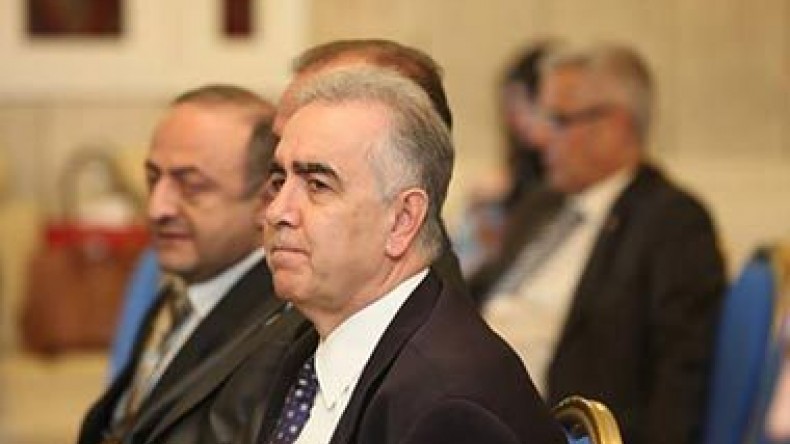
Now that lawsuits are settled, let’s build Genocide Memorial
By Harut Sassounian
www.TheCaliforniaCourier.com
On July 15, a Federal Court of Appeals upheld a lower court’s 2011 decision, ordering the return to the CafesjianFamily Foundation (CFF) the properties intended for the construction of an Armenian Genocide Museum and Memorial in Washington, D.C.
Here is how Appeals Court Judges Garland, Wilkins, and Ginsburg summarized the series of lawsuits and counter-suits filed by the contending parties in the past seven years:
Armenian Assembly of America officials, including Hirair Hovnanian and Gerard Cafesjian, “secured sizeable funding contributions, and formed a nonprofit corporation, the Armenian Genocide Museum and Memorial (AGM&M). They also agreed on and purchased a historic building for the museum’s site, just a few blocks from the White House. But as the years wore on, they were unable to agree on much else. Progress staggered. Tensions mounted. Little true headway was made. Eventually, one of the project’s principal founders and benefactors, the late Gerard Cafesjian, chose to part ways with the group and resigned his post as President of AGM&M. The split was far from amicable. And so began a chain of events culminating in this tangle of litigation. After several years of legal wrangling, the parties’ claims ultimately proceeded to a bench trial before the District Court. Save for a single cause of action, all of the claims were found unproven. Post-trial proceedings ensued on a multitude of issues, and, after many of the District Court’s decisions were appealed on a piecemeal basis, the assorted cases on appeal were consolidated and presented to us for resolution.”
In the last page of their ruling, the Appeals Court Judges voiced their frustration and dismay at the wasteful series of lawsuits. In utter exasperation, they wrote:
“This legal saga has been long-lived. What began as a single lawsuit to collect on an unpaid promissory note quickly escalated into a morass of litigation. More than seven years and millions of dollars in legal fees later, much of the parties’ work to achieve their dream of a museum appears to have been for naught, which is regrettable. Whatever happens next, hopefully our decision today can at least serve as the last word on this dispute’s protracted journey through the courts.”
I received scores of e-mails from many readers last week deploring the fact that two prominent Armenian organizations wasted millions of dollars in suing each other instead of settling their dispute out of court and building a Genocide Museum, scheduled for completion long before the Centennial of the Armenian Genocide. Unfortunately, the inauguration of the Museum, located just two blocks from the White House, may not take place at all!
It is deeply regrettable that both sides had rejected all offers by third parties to mediate their dispute. The millions of dollars spent on litigation would have helped fund the Genocide Museum. This is yet another sorrowful example of Armenians acting against their own interests!
A miracle could still happen! Even though Mr. Cafesjian passed away last September, he had repeatedly declared that it was his fervent desire to build a Genocide Museum and Memorial in the nation’s Capital. Armenians worldwide ardently wish that his heirs and CFF trustees honor Mr.Cafesjian’s commitment to this revered project and bring his undying dream to fruition.
Armenia’s leaders, heads of Diaspora organizations, and community members should notify CFF trustees that they are fully ready and prepared to provide all possible support to make Mr. Cafesjian’s dream a reality. This museum shall be a lasting tribute to Gerard Cafesjian who donated tens of millions of dollars for humanitarian projects in Armenia and the United States.
Now that this acrimonious lawsuit is behind us, it is high time for the Armenian American community, with the consent of CFF trustees, to come together and form a pan-Armenian committee, including the Armenian Assembly, to begin planning the building of this important landmark in Washington, D.C.
The Genocide Museum would be a lasting reminder to millions of visitors not only of the terrible tragedy that befell Armenians in 1915, but more importantly, the story of their indomitable spirit to survive and thrive. The Museum, therefore, could more properly be called, “Memorial to Armenian Survival from Genocide.”
Should CFF trustees and the Armenian-American community share this miraculous vision, the groundbreaking ceremony could be held on the future site of the Armenian Memorial on April 24, 2015!
Newsfeed
Videos






























